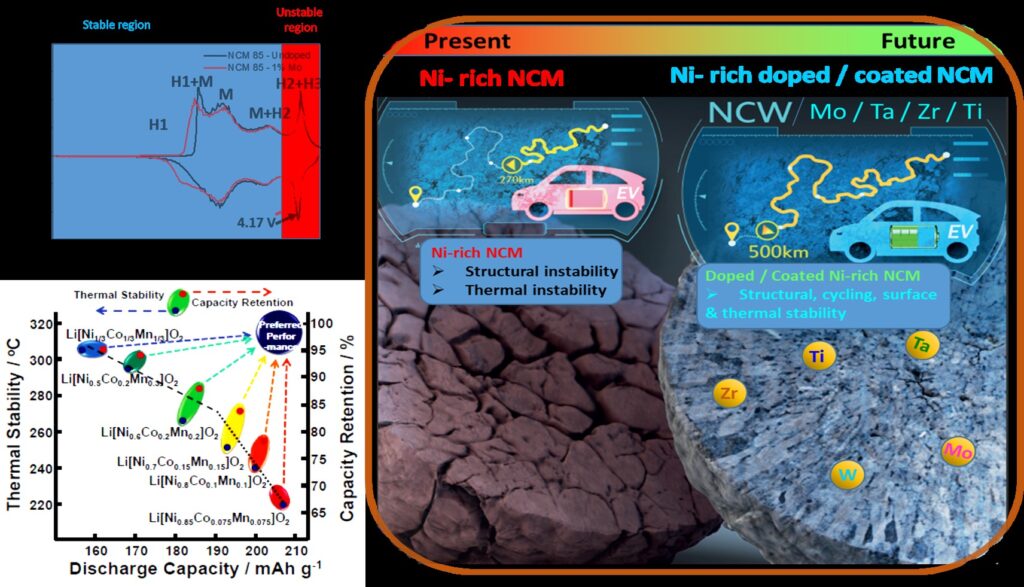Presentation Title: On the frontier of materials science for energy storage and conversion
Prof. Dr. Doron Aurbach presented this talk in the webinar on Materials Science, Engineering and Technology organized by Vebleo
Author: Doron Aurbach, Boris Markovsky, Elena Markevich, Gregory Salitra, Sandipan Maiti, Hadar Sclar, Francis Amalraj and Yehonatan Levertovsky
Affiliation: Department of Chemistry and the Center of Nano-Technology and Advanced Materials (BINA), Bar-Ilan university, Ramat-Gan Israel, 5290002
Biography
Doron Aurbach is a full professor at the Department of Chemistry, which he chaired during 2001–2005, and leads the electrochemistry group (founded in 1985) at Bar Ilan University and the Israel National Research Center for Electrochemical Propulsion (INREP, 25 research groups from7 Israeli universities).
Professor Doron Aurbach and his team study the electrochemistry of active metals, non-aqueous electrochemistry, intercalation processes, electronically conducting polymers, and water desalination and develop rechargeable batteries and supercapacitors with high energy density including spectroscopic methods for sensitive electrochemical systems. He has published more than 700 papers and 30 patents that were cited more than 70000 times (Google Scholar, H –index 131).
Professor Doron Aurbach is a technical editor for the Journal of the Electrochemical Society (JES), in charge of the batteries and energy storage (BES) area. 60 and 80 people received PhD and MSc degrees (respectively) under his supervision.
Professor Doron Aurbach is a JES, ISE and MRS fellow. recipient of the Israel Chemical Society prize of excellence (2012), research Award of the ECS battery division (2013), E. B. Yeager prize of the Interbational Batteries Assocation (IBA, 2014), Alan Bard Award of the Electrochemical Society (ECS, 2017) , the Alexander Frumkin Medal of the International Society of Electrochemistry (ISE, 2018), the Eric and Sheila Samson Prime Minister prize for innovation in alternative fuels (2018), the Gold Medal of the Israel Chemical Society 2020.
Abstract
Electro-mobility is the major challenge today in the field of electrochemical power sources. However, we encounter too many unsupported promises, too much noise! Examples: Many publications on ‘novel’ nano-materials, not suitable for practical battery applications. Nanomaterials may mean high surface area and pronounced side reactions. For instance – thousands of papers on conversion reactions anodes (nanomaterials), none of them show performance at elevated temperatures, why? Also nano-materials have puffy structure (difficult to process into electrodes).
A lot of words (recently also conferences) on “ beyond Li-ion batteries”. Beyond… for what purposes? Hard to see what can be relevant for electrochemical propulsion beyond Li-ion batteries. In fact, the only relevant partner may be H2/O2 fuel cells, which are becoming highly relevant power sources because hydrogen can be stored in EVs at high pressure.
The main theme of this presentation is to examine what is the true horizons for advance Li ion batteries that can promote the electro-mobility revolution.
The limiting factor in Li-ion batteries in terms of energy density, cost, potential, durability and cycling efficiency are the cathode materials used. The most promising cathode materials for advanced Li-ion batteries are Li and Mn rich layered oxides ,Li1+x[MnNiCo]1-xO2 (providing specific capacities > 250 mAh/g, but at high voltages) and lithiated transition metal oxides, Li[NiCoMn]O2 compounds, in which the main transition metal is nickel.
As the amount of Ni in the latter cathode materials is higher, the specific capacity is higher as well, yet can be extracted at relatively low potentials (< 4.3 V vs. Li) which do not endanger the anodic stability of the electrolyte solutions used in these batteries. For instance, the specific capacity of LiNiO2 cathodes can reach 240 mAh/g upon charging to 4.3 V.
However, as the content of Ni is higher, these cathode materials are less stable mechanically, thermally and electrochemically. We will explain the problems and will demonstrate solutions for them. Using judicious doping and/or surface coating, it is possible to fully mitigate detrimental situation with both classes of cathode materials. After gaining enough experience, it is possible to develop computational routes that can suggest optimal doping and coating processes.
This presentation reports about our ongoing work in the field. We can conclude that developing advanced Li-ion batteries, fully suitable for long range electric vehicles, is real, practical and fruitful.
Graphical Abstract

This talk was delivered in the webinar organized by Vebleo